eBird.org and the Cornell Lab of Ornithology's
Suite of Bird-watching Tools
The Cornell Lab of Ornithology provides an incredible array of bird-watching tools. The essential tools are free to use.
To gain the full functionality of the site, you can register for a free account.
- Birders around the world are using eBird to record their bird sightings.
- Scientists around the world are using that data for research.
- That research has become a key source of information for bird conservation across the globe.
Click Here to see a 3-minute Introduction at eBird.org.
- Record your sightings: You can generate your personal birdlist for any location.
- Generate a Bird List specific to almost any area (Bar Charts). For example:
- by Region, Country, State or County
- by Important Birding areas and Identified "Hot Spots"
- Visiting your cousin in Georgia? Get a list of species you are likely to see!
- Generate an Abundance Map, Range Map or Abundance Animation for a particular Species.
- Get help with Bird Identification.
Resources at the Cornell Lab of Ornithology:
Cornell Lab's All About Birds, an extensive online Field Guide. Detailed information on North American Species.
- For Bar Charts, Species Maps and other tools: Go to Explore
- For Abundance Maps, Range Maps and Abundance Animations: Go to Science, then eBird Status and Trends
- For Merlin Bird ID App Go to Explore, then Merlin Bird ID
- To Submit your bird observations to eBird: Go to Submit
- eBird Tutorial on how to Submit your bird observations on eBird.org: Go to eBird.org Tutorial
- eBird Tutorial on how to Submit your bird observations using eBird Phone App: Go to eBird Phone App Tutorial
- eBird Protocols for Submitting Observations.
- Introductory Course on eBird: eBird Essentials
- eBird Video Tutorials on YouTube
- eBird Help Center Solution Home provides accessible, detailed information for every user whether novice or advanced.
- eBird Glossary of eBird and Bird-watching Terminology.
Cornell Lab's Center for Conservation Bioacoustics
- For Raven Lite Sound Software: Go to Software then Raven Lite
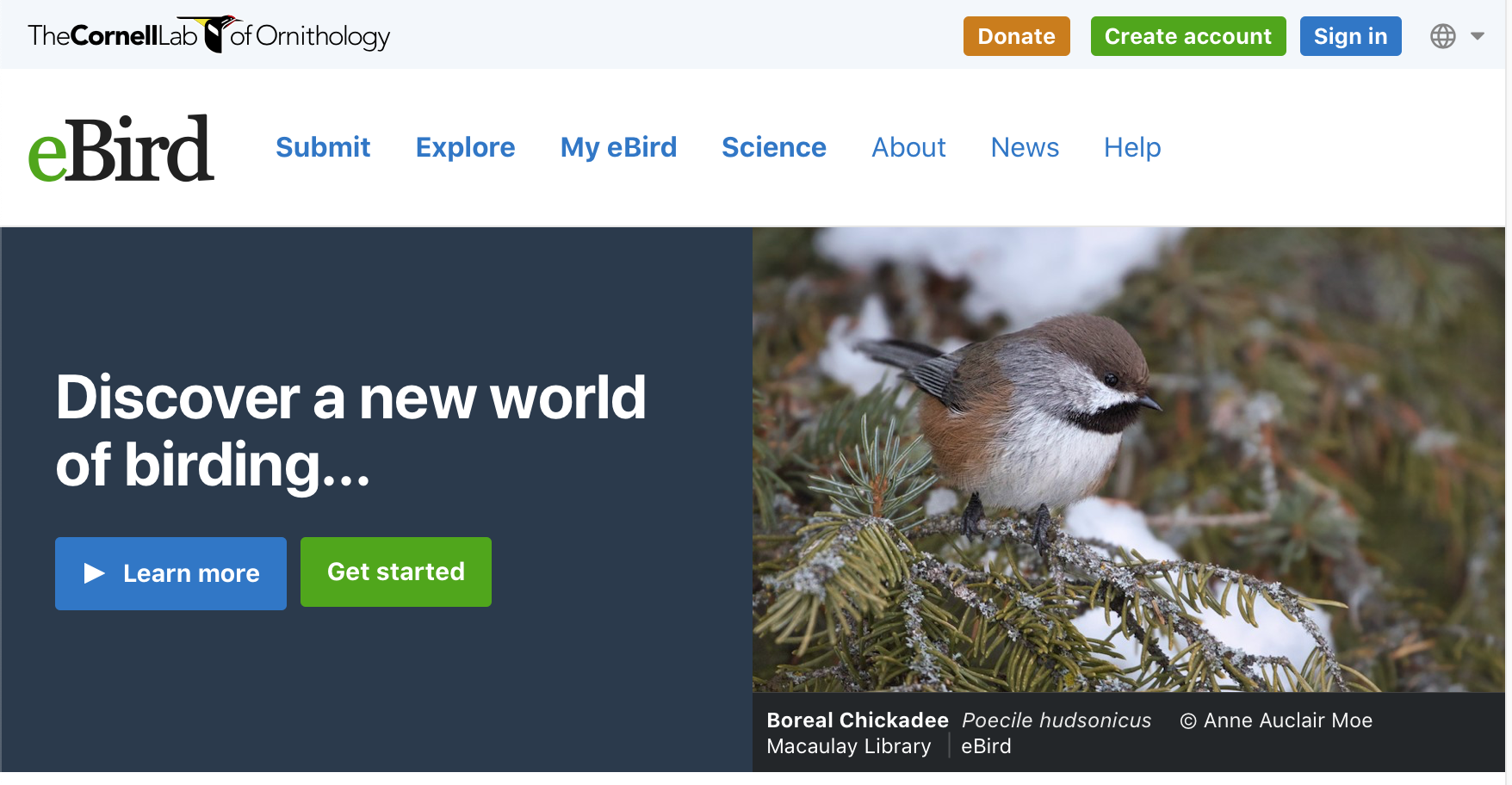
Starting at the eBird Home page, Choose "Explore" from the Menu at the top.
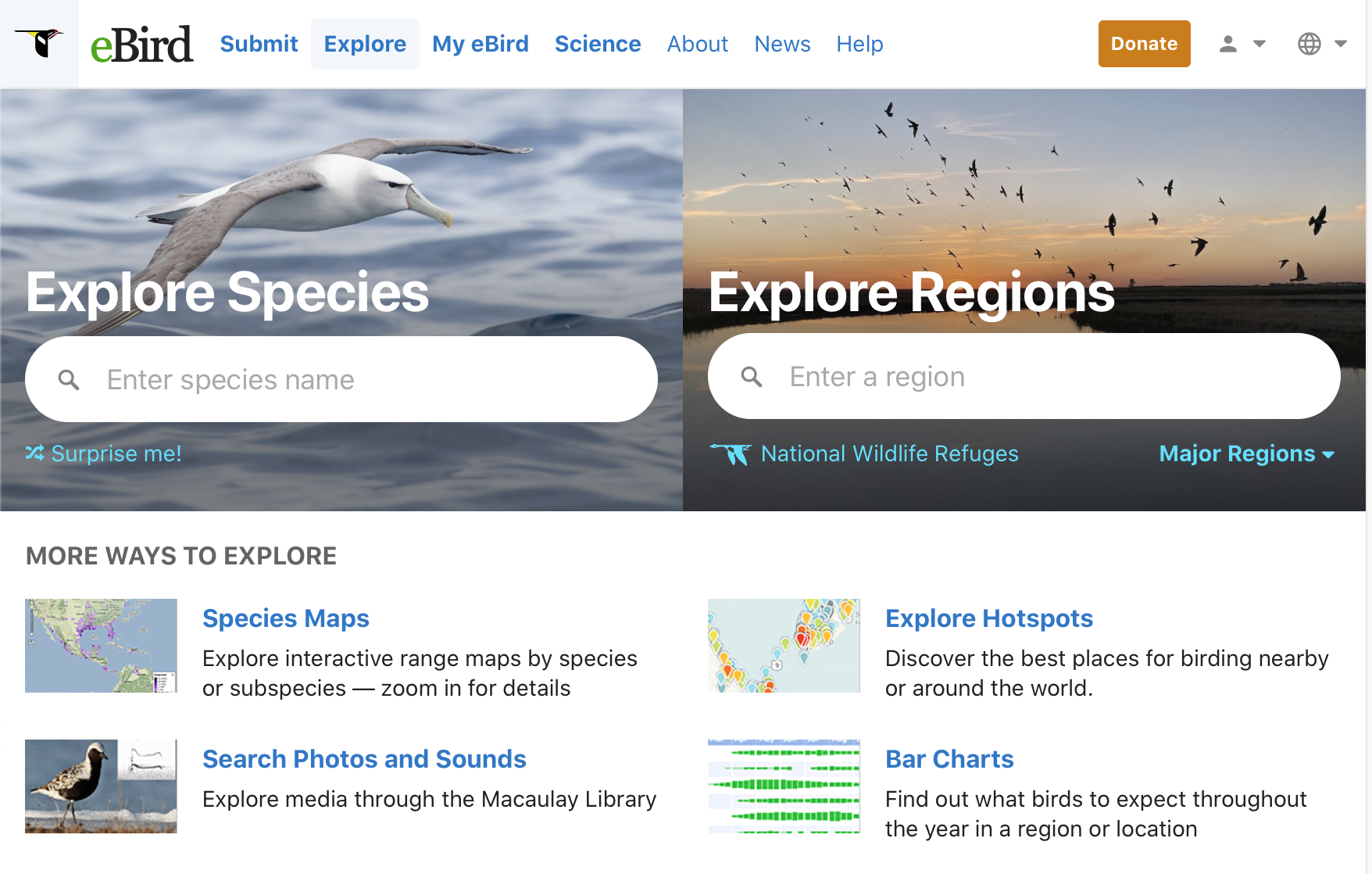
Choose "Bar Charts" from lower right.
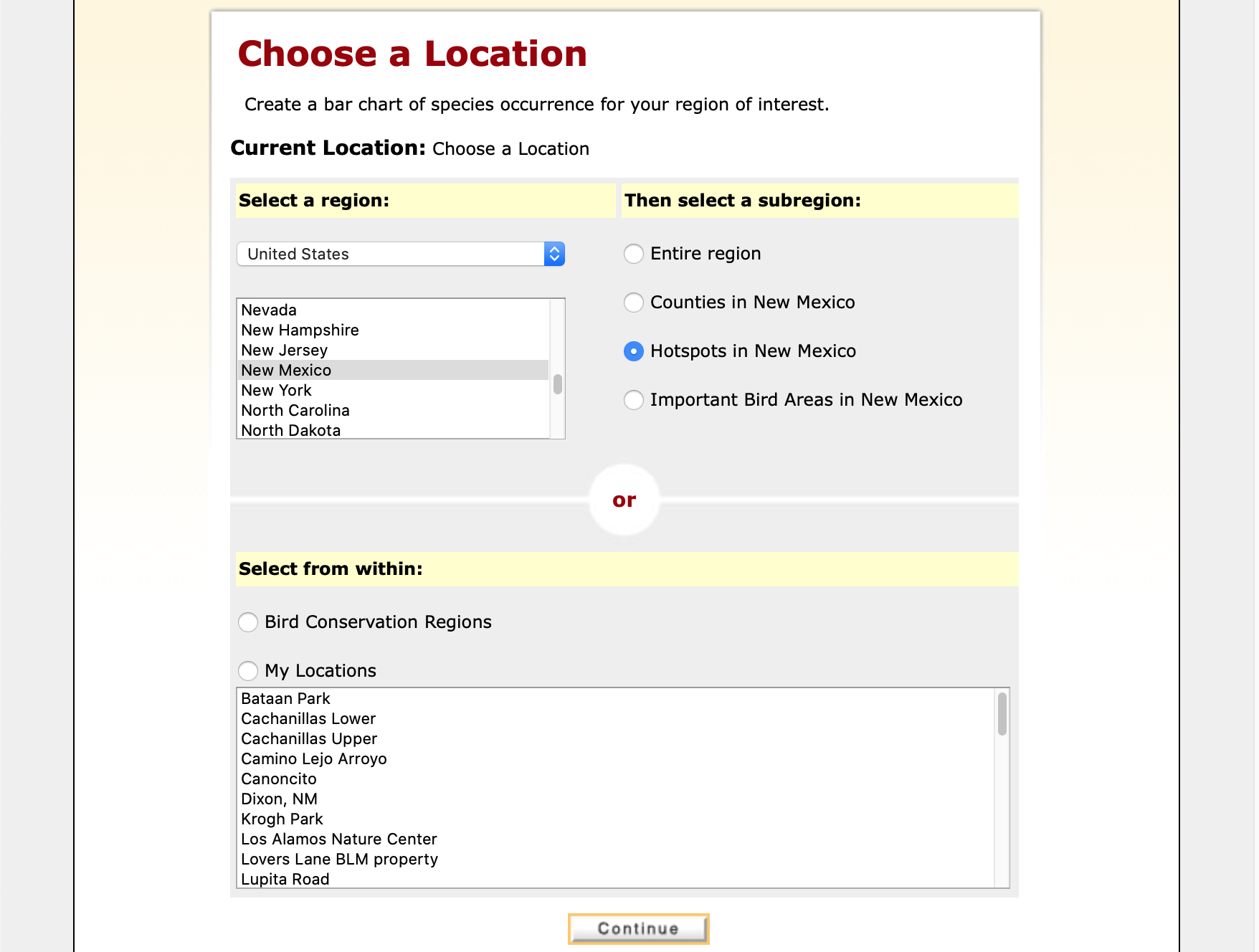
Select New Mexico and "Hotspots"
Then click on "Continue"
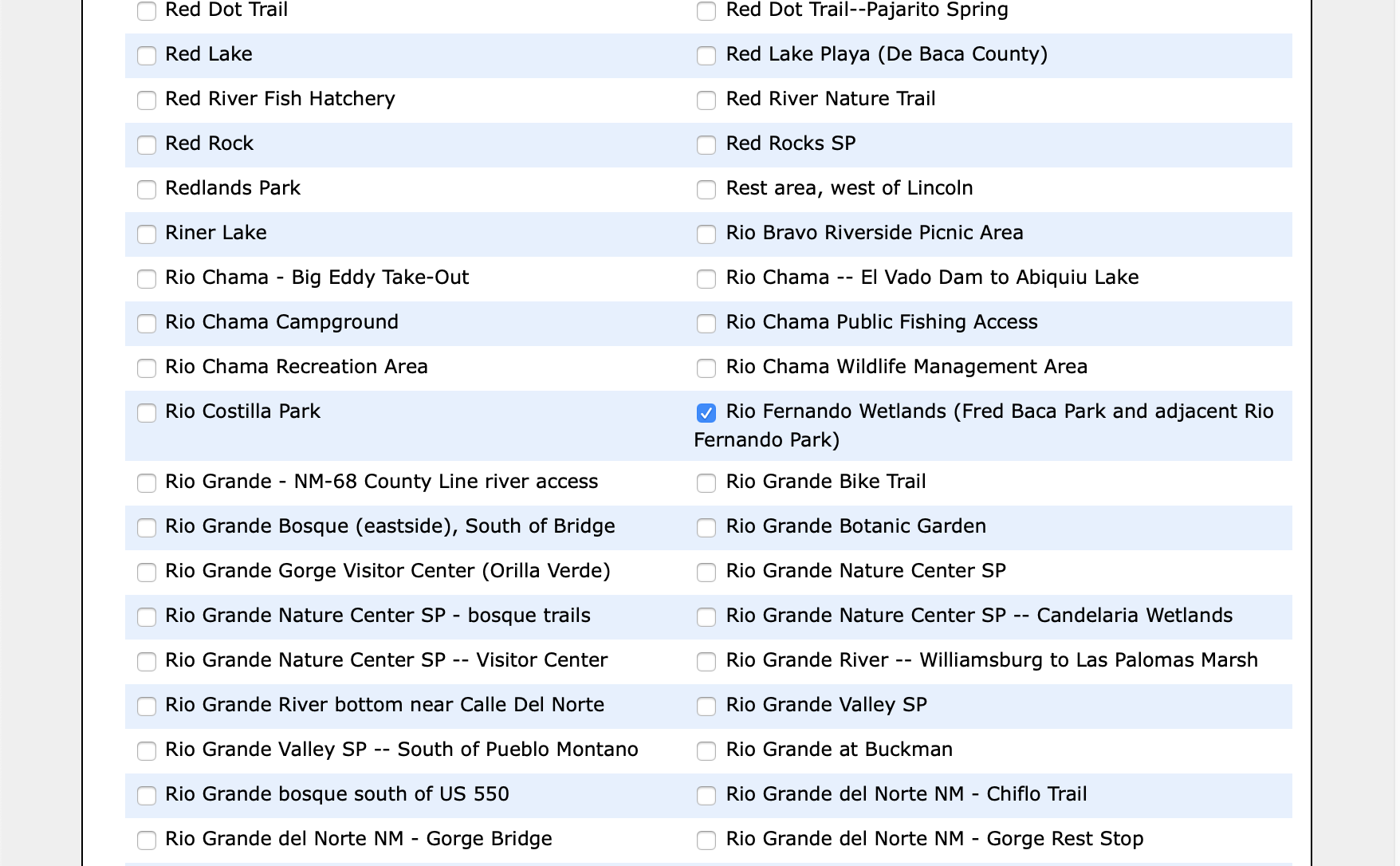
Scroll down through the long list and Select "Rio Fernando Wetlands"
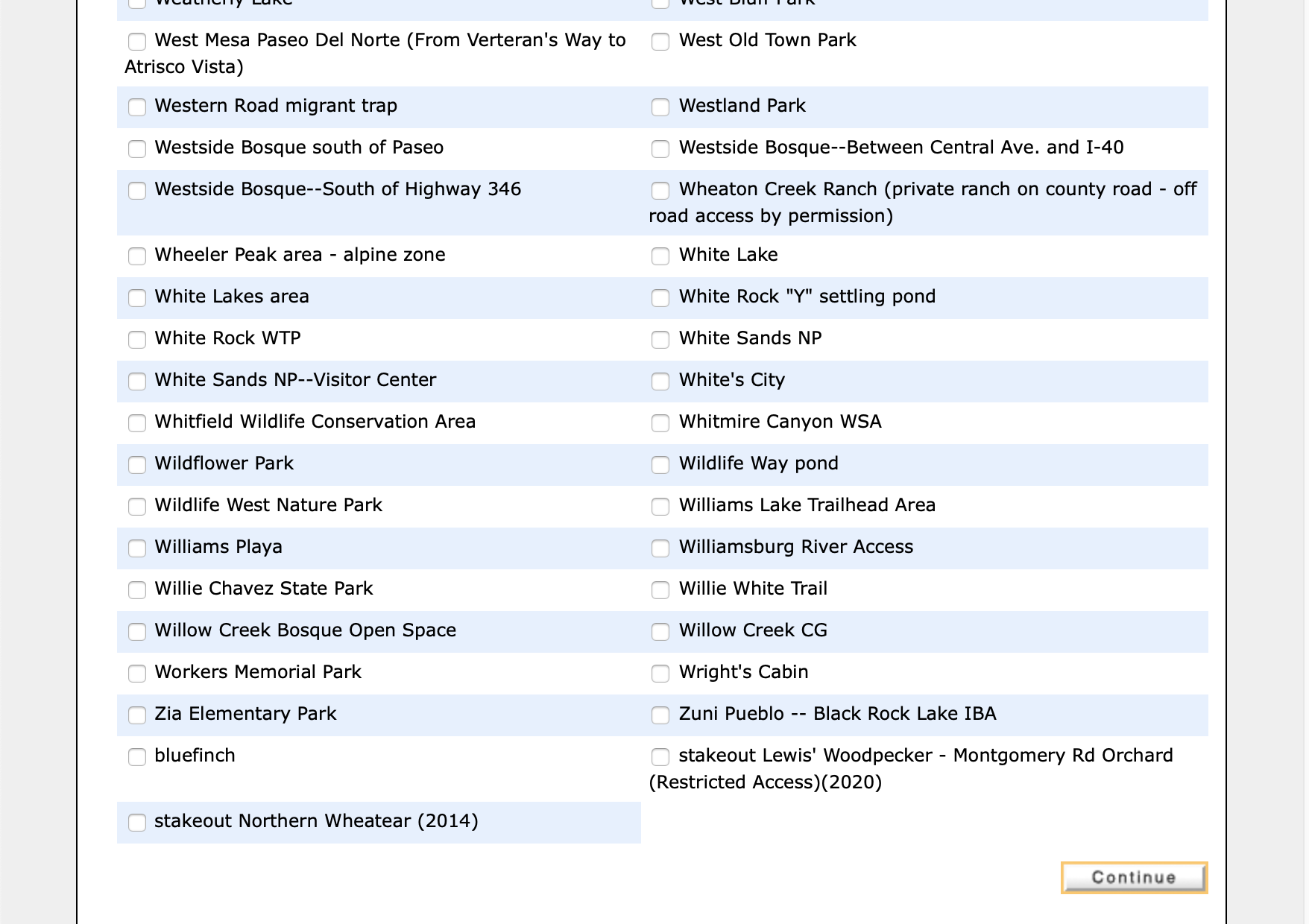
Scroll to the bottom and click on "Continue"
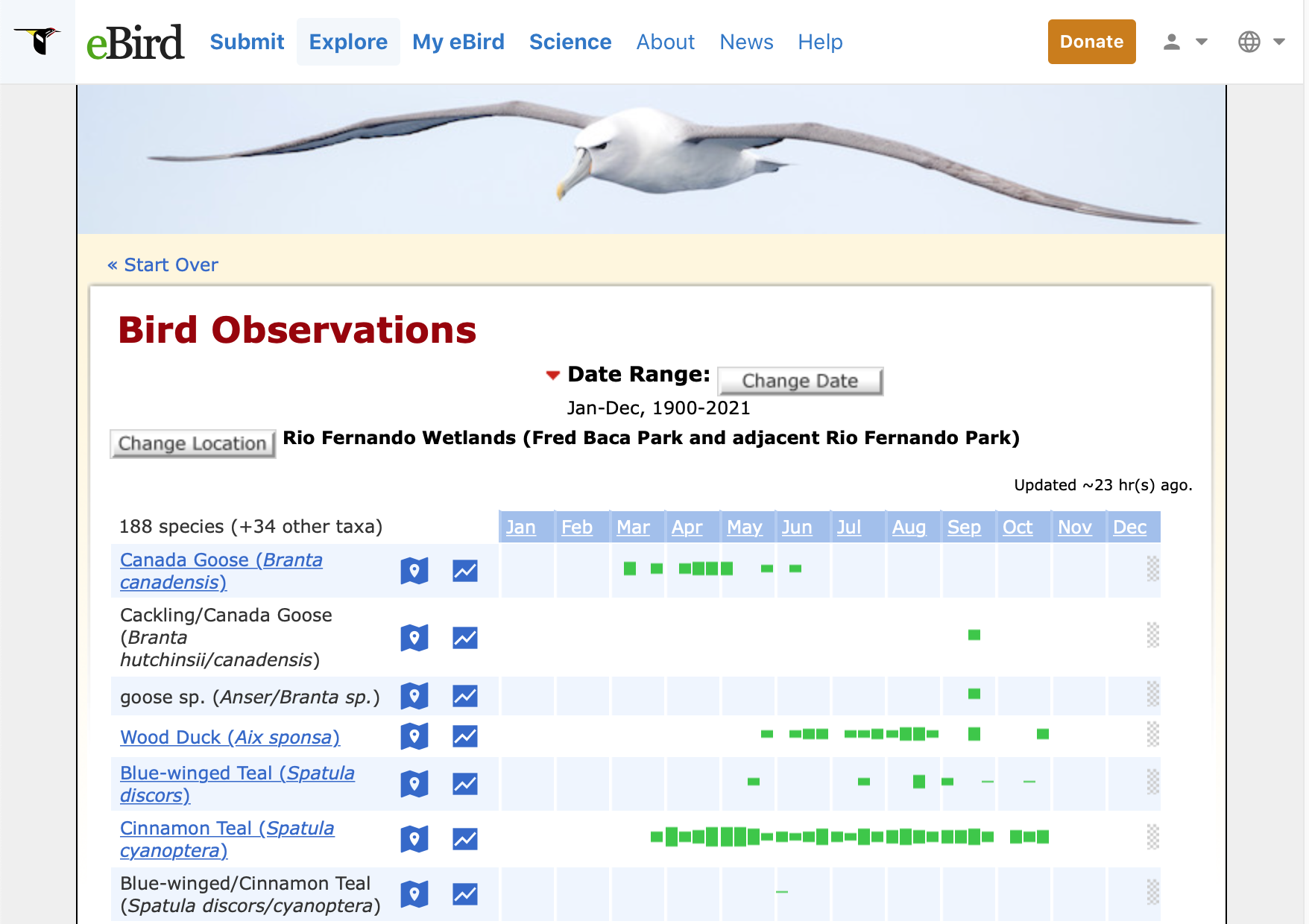
Now you can explore the list.
Clicking on a Species Name takes you to an information page on that species. It also serves as a portal to:
- eBird Range and Species Maps
- Photos, Sound Recordings and Video of that species from the Cornell Lab's Macaulay Library.
- The All About Birds pages for that species
Clicking on the Flag-shaped Icon takes you to the Species Map for this bird.
Click "Change Location" to generate a Bar Chart for a different location.
- Range and Abundance Maps: Go to "Identifying Birds", then "When? - eBird Range and Abundance Maps"
- Abundance Animations: Go to "Migration View", then "Abundance Animations"
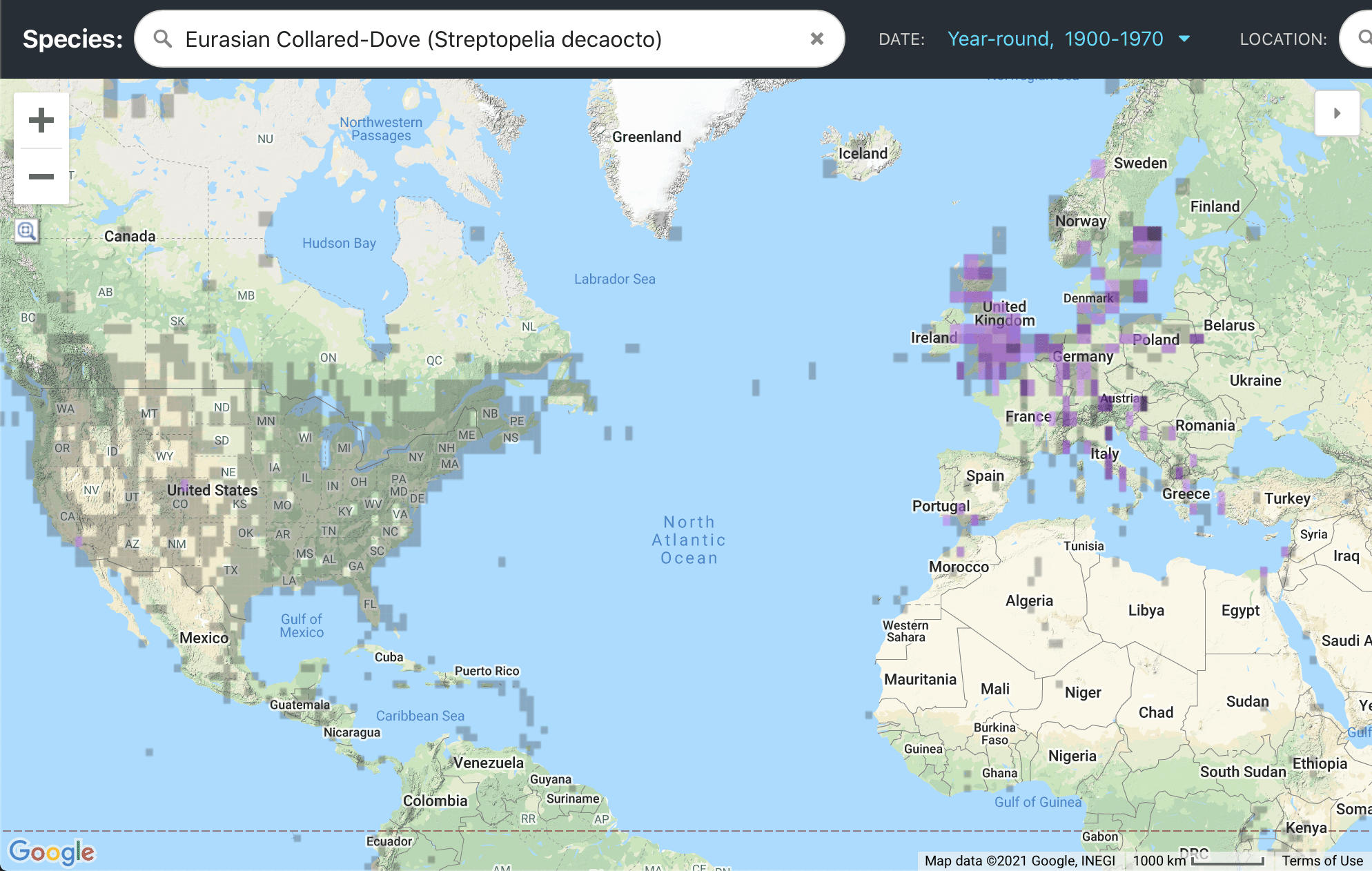
This eBird Species Map shows the distribution of the Eurasian Collared-Dove (Streptopelia decaocto) up until 1970. Its range was limited primarily to Europe.
In 1974, a small number of captive Eurasian Collared-Doves in the Bahamas escaped into the wild.
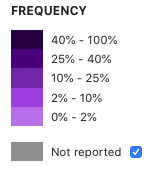
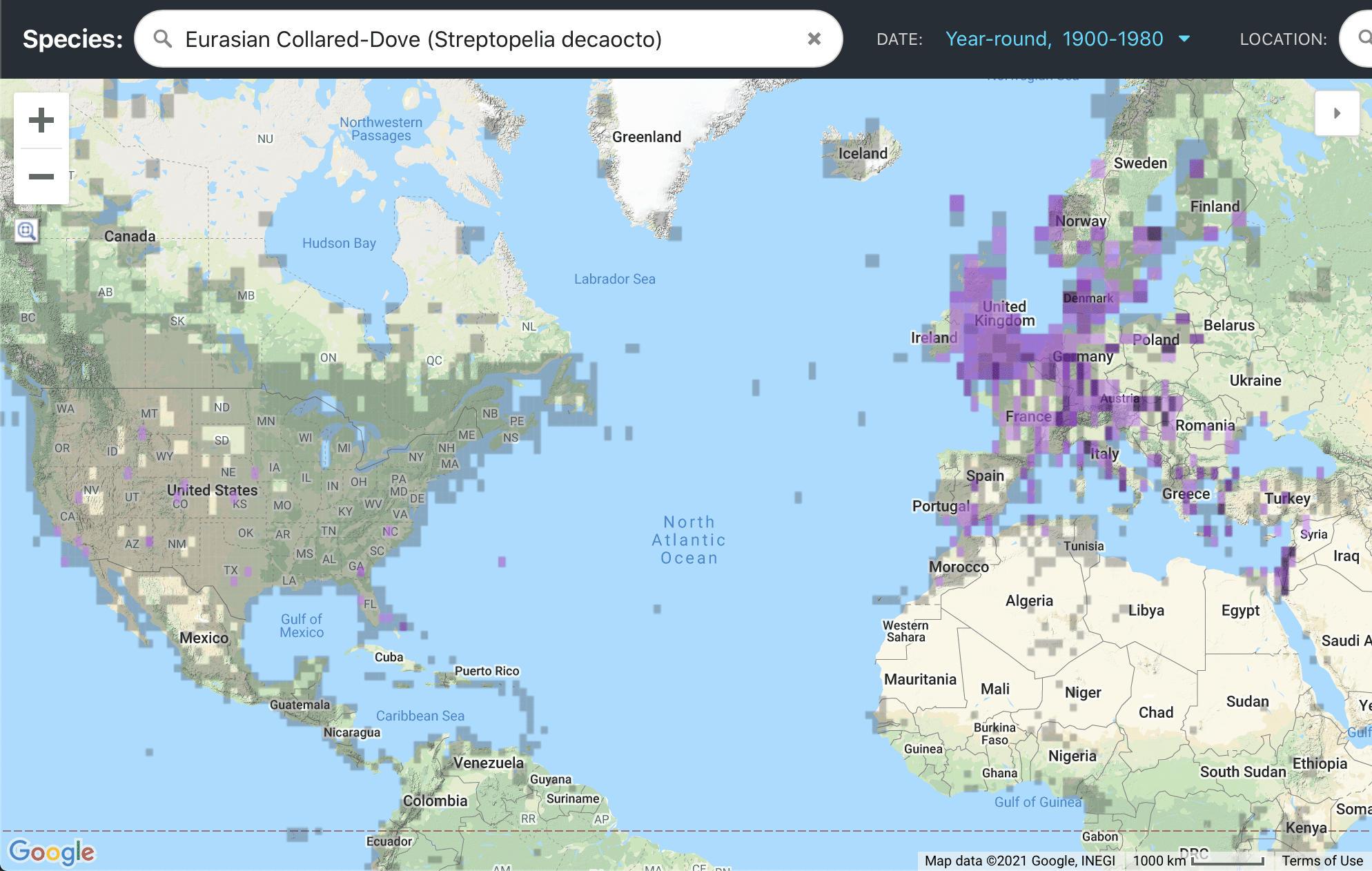
Here is the distribution by 1980.
There are scattered records across much of the US, with many records in Florida and the nearby coastal states.
(Note also that there appears to be a range expansion happening in Europe.)

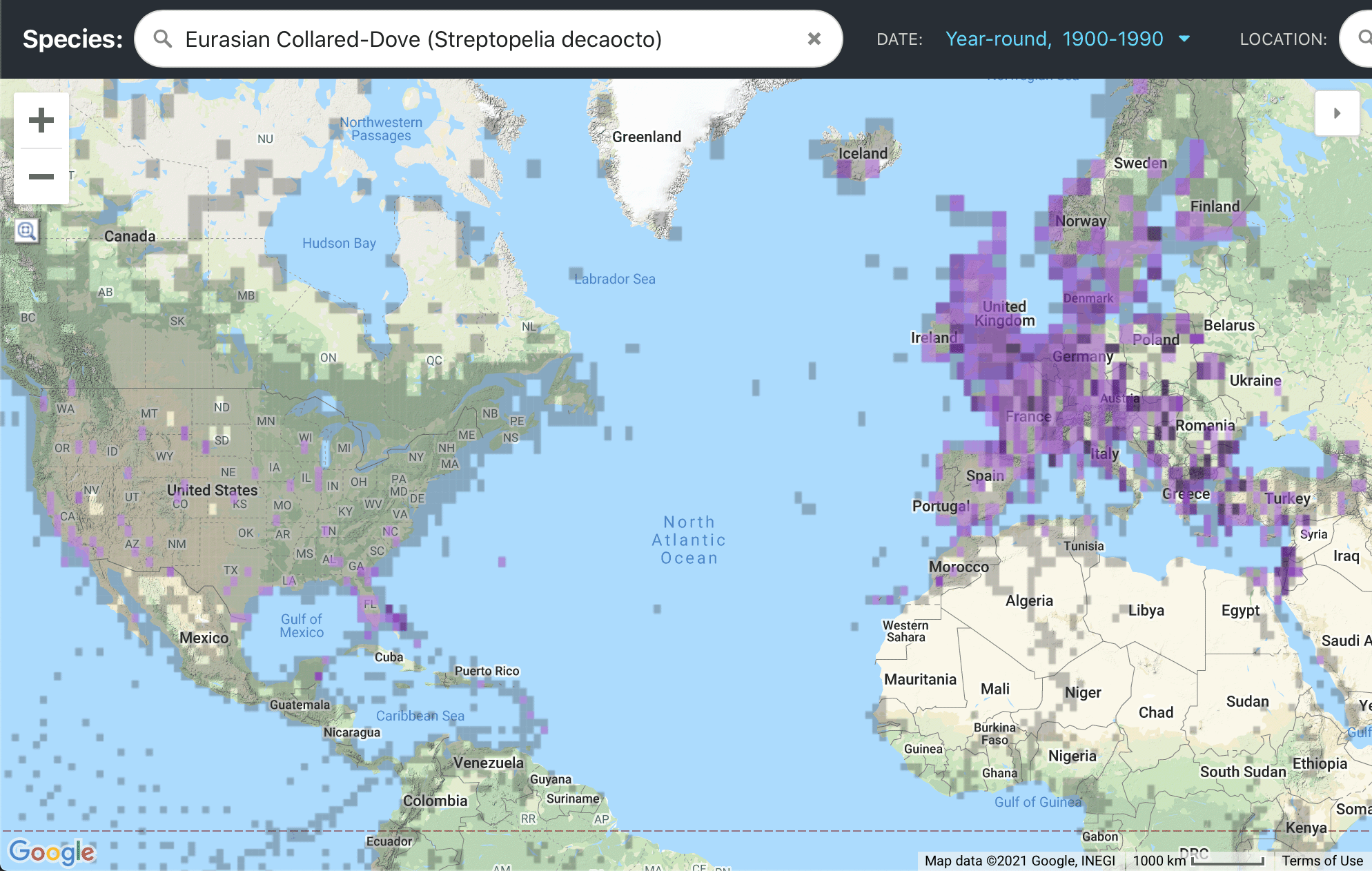
Here is the distribution by 1990.
There are more records across the country with heavier concentrations in Florida and the nearby coastal states.
(The population in Europe is now spreading into Asia)

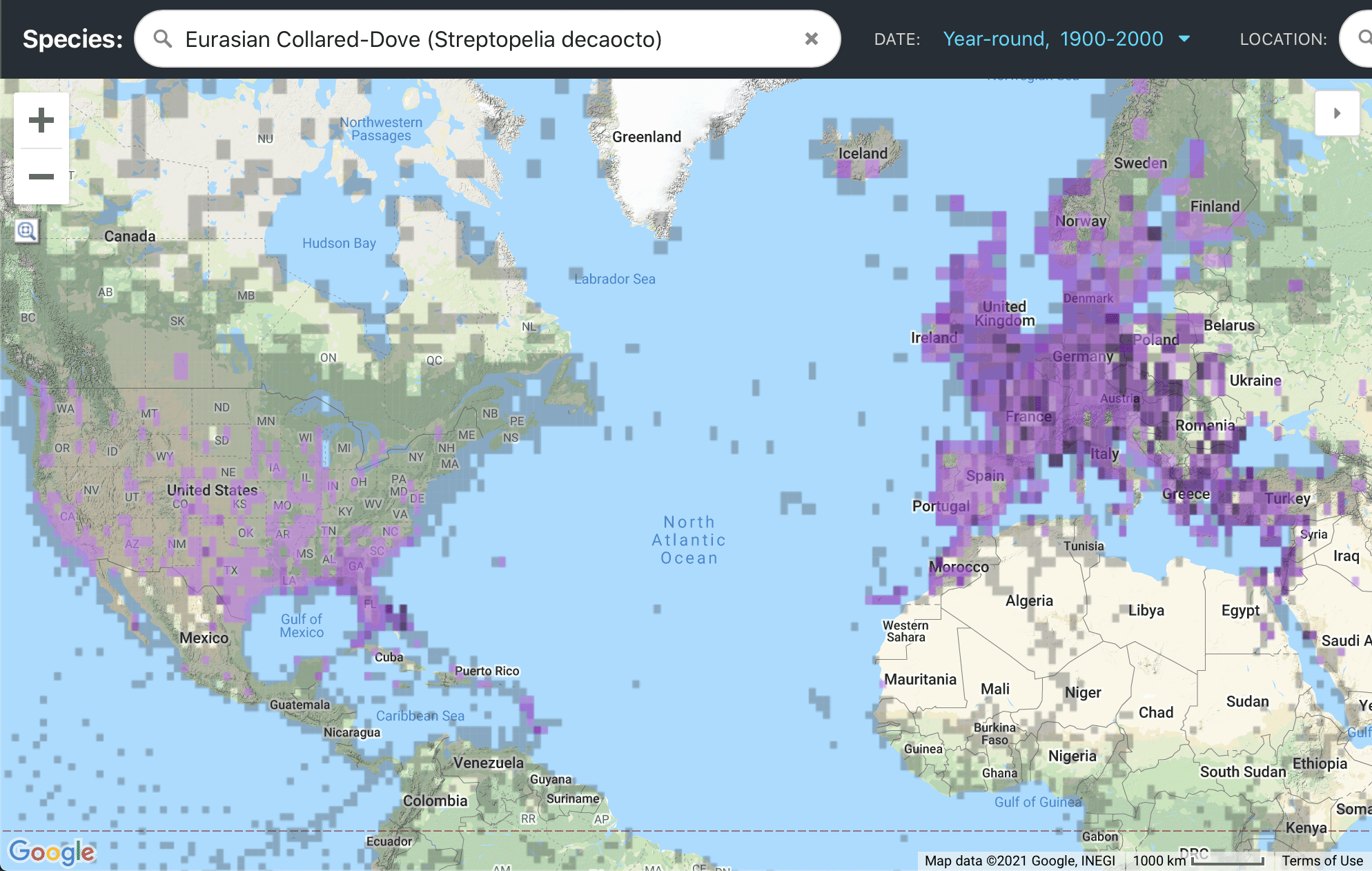
Here is the distribution by 2000.
The species is widespread across the US with well established populations in the US South. Only the Northeastern part of the country is not involved.

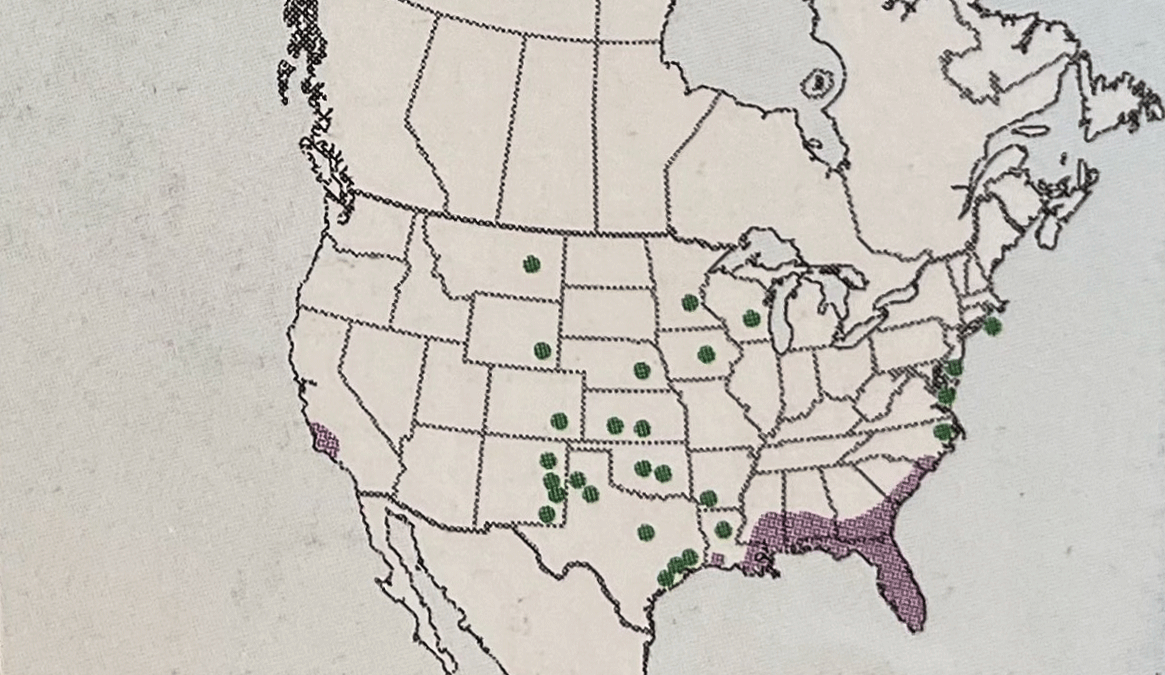
Here is the range map for Eurasian Collared-Dove from the origianl Sibley Guide published in 2000.
The Year-round range encompasses Florida and the coastal areas of the nearby coastal states.
The is also a small population in Southern California noted.
The green dots indicate places with known records.
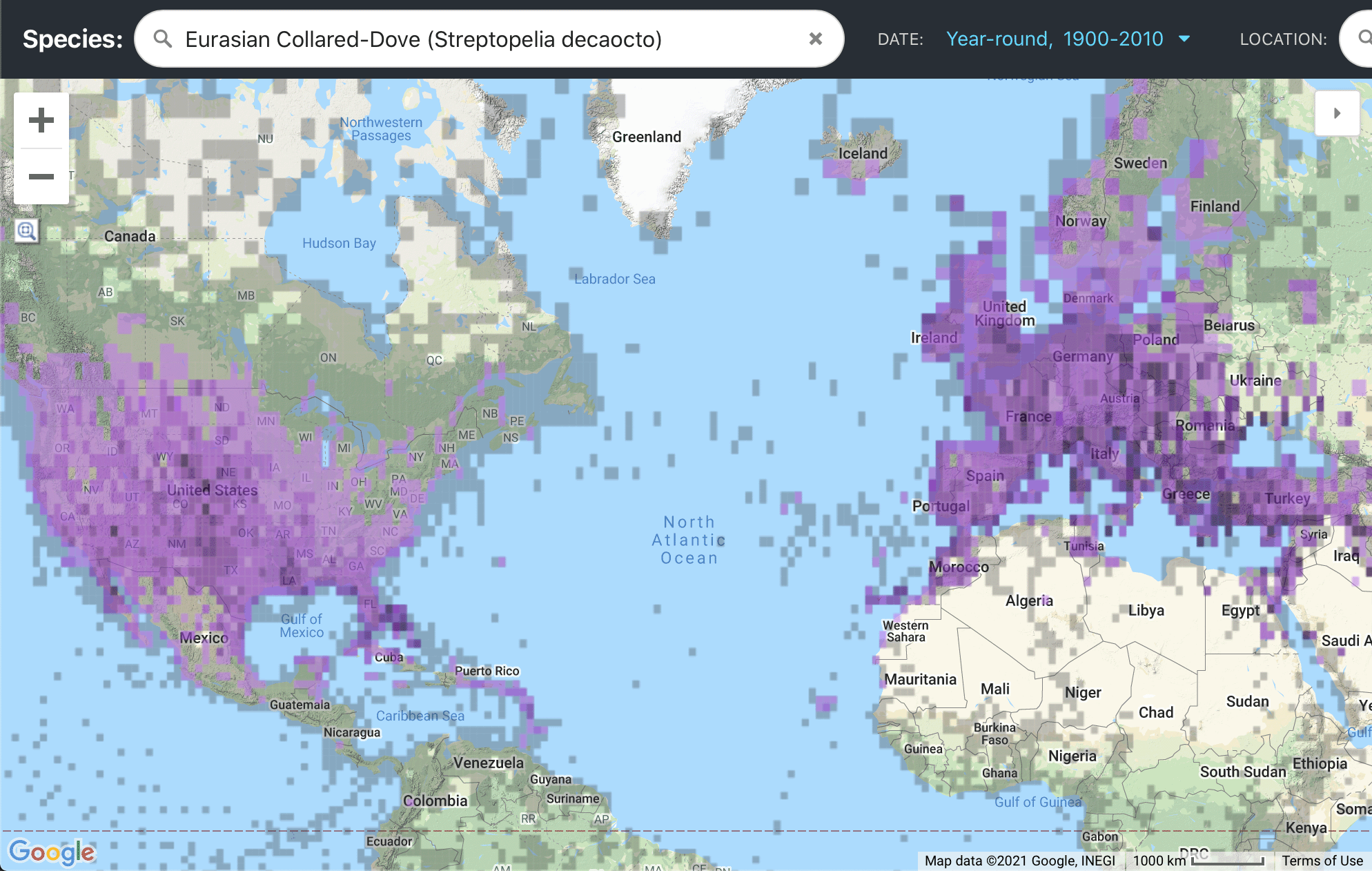
Here is the distribution by 2010.
There are well established populations across much of the US, with expansion into Mexico and the Caribbean.
The author's first observation of Eurasian Collared-Dove in Taos County was on April 22, 2007 in Peñasco.

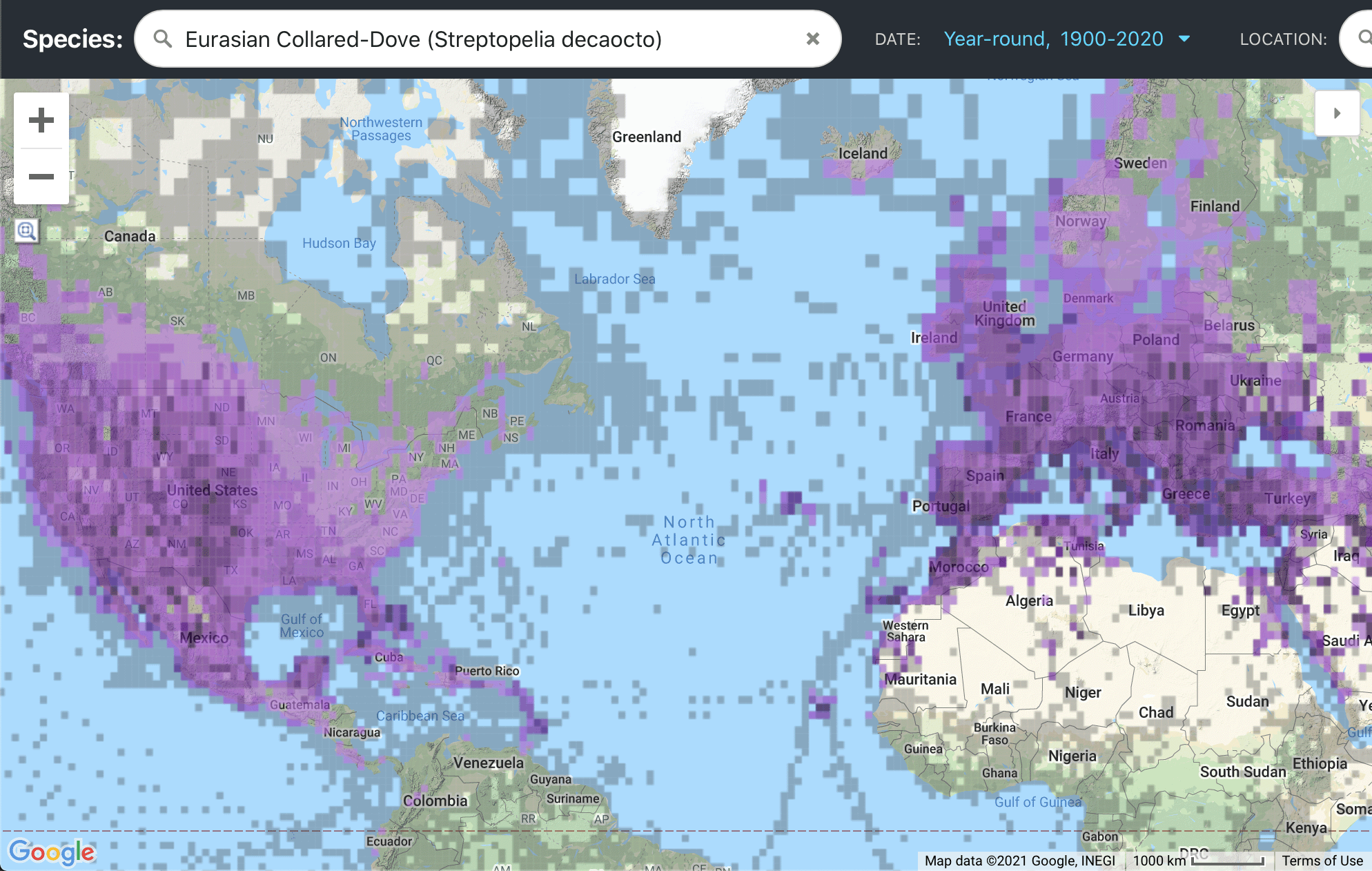
Here is the distribution by 2020.
There are well established populations across much of the US, with expansion into Mexico and the Caribbean.
For more information on the Eurasian Collared-Dove Expansion on Wikipedia: Click Here
